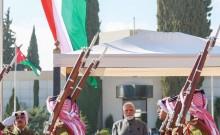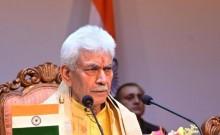Pope Francis began the final leg of his first African trip in Central African Republic where he will deliver a message of reconciliation and peace to a nation racked by several years of violence between Muslims and Christians.
The visit to the former French colony will be the pontiff's first trip to a combat zone and his arrival is being welcomed by both majority Christians and the Muslim minority, who hope his presence can foster renewed dialogue and ease the violence.
The pope's plane touched down at around 10 a.m. at the airport in the capital Bangui, where he was greeted by dignitaries, including the city's Archbishop Dieudonné Nzapalainga.
Dozens of children waved flags with the colors of the Vatican - yellow and white.
Ahead of his arrival, thousands of people lined the route Francis was due take into the city and hundreds of boy scouts were deployed to help control the crowds.
Bangui has seen a surge in clashes that have left at least 100 people dead since late September, according to Human Rights Watch, and security has been ramped up ahead of the papal visit.
France, which has around 900 soldiers deployed in Central African Republic, warned the Vatican earlier this month that the visit could be risky, and the pope's exact itinerary has remained uncertain even in the final days before his arrival.
Gabriel Ouamale, 33, who sells souvenirs, including t-shirts and umbrellas bearing the pope's image, in front of Bangui's cathedral, said sales have only picked up in the past week.
"There were people who doubted, who said he couldn't come due to the situation in the country. But the people now know he's coming," he said.
On Saturday, Pope Francis travelled to Uganda's holiest shrine on Saturday, paying tribute to 19th-century Christian martyrs killed for their faith, including for protecting young boys in the royal court from abuse by the king.
Francis, on the second leg of his first African tour, said Mass for tens of thousands of people huddled on muddy hillsides surrounding the soaring modern shrine made of iron and cone-shaped to resemble a hut of the Baganda tribe.

















